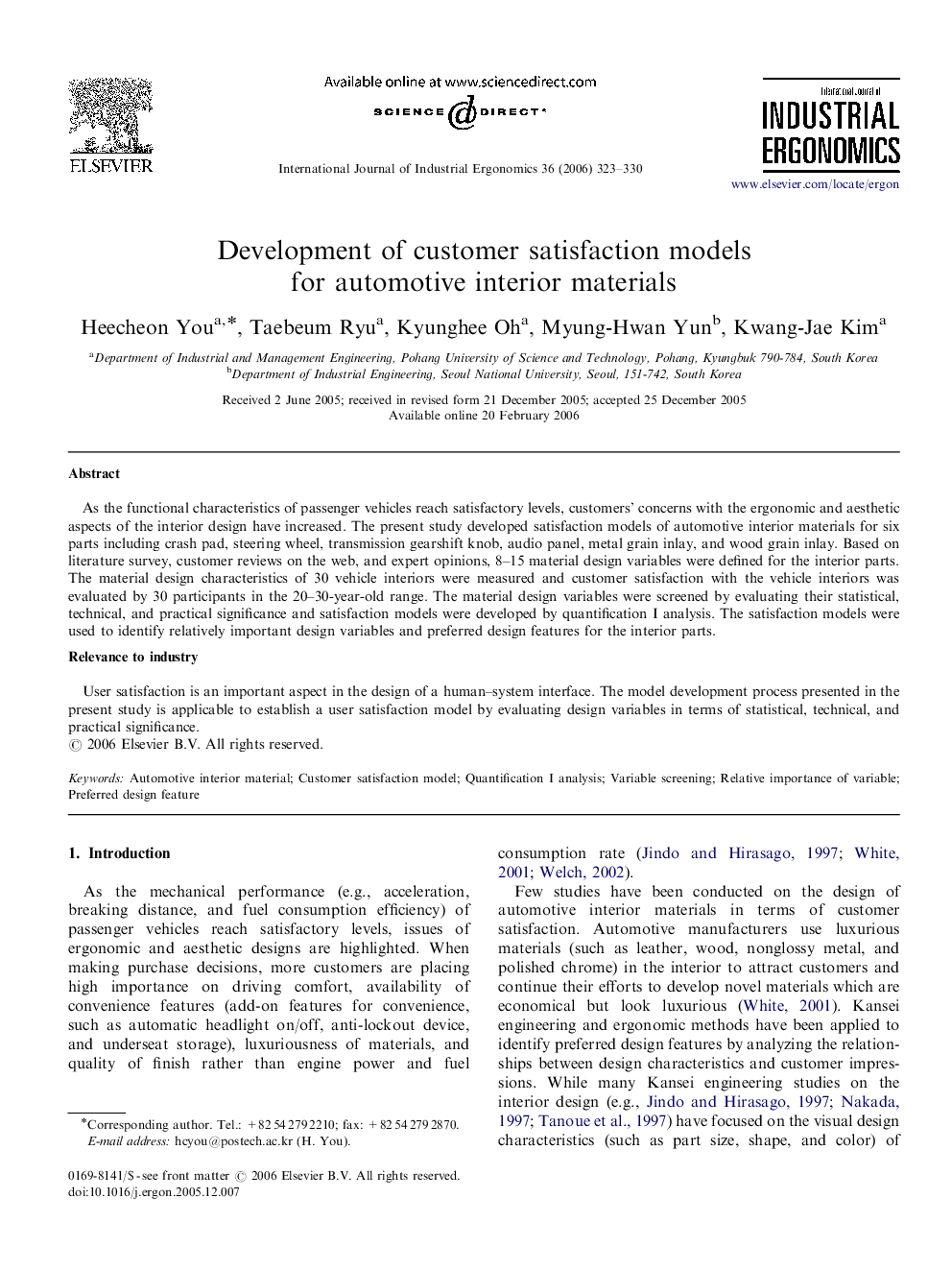| Article ID | Journal | Published Year | Pages | File Type |
|---|---|---|---|---|
| 1096416 | International Journal of Industrial Ergonomics | 2006 | 8 Pages |
As the functional characteristics of passenger vehicles reach satisfactory levels, customers’ concerns with the ergonomic and aesthetic aspects of the interior design have increased. The present study developed satisfaction models of automotive interior materials for six parts including crash pad, steering wheel, transmission gearshift knob, audio panel, metal grain inlay, and wood grain inlay. Based on literature survey, customer reviews on the web, and expert opinions, 8–15 material design variables were defined for the interior parts. The material design characteristics of 30 vehicle interiors were measured and customer satisfaction with the vehicle interiors was evaluated by 30 participants in the 20–30-year-old range. The material design variables were screened by evaluating their statistical, technical, and practical significance and satisfaction models were developed by quantification I analysis. The satisfaction models were used to identify relatively important design variables and preferred design features for the interior parts.Relevance to industryUser satisfaction is an important aspect in the design of a human–system interface. The model development process presented in the present study is applicable to establish a user satisfaction model by evaluating design variables in terms of statistical, technical, and practical significance.
